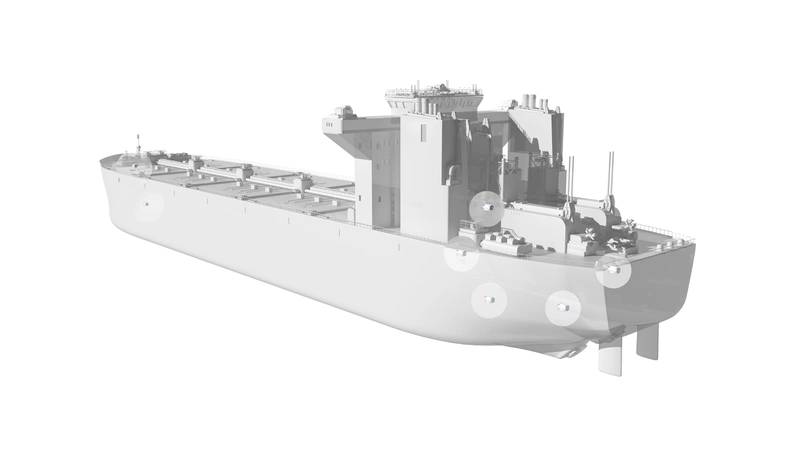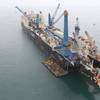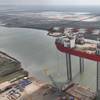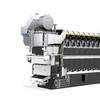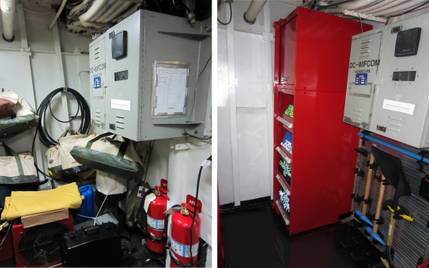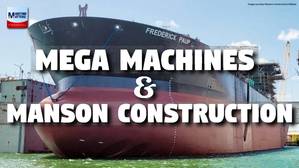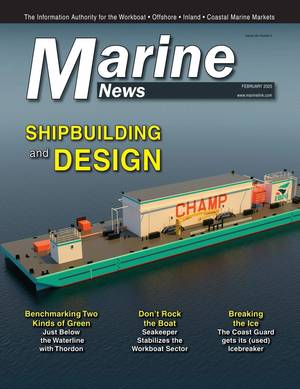The Drive Behind Water-Cooled Motors
Peter Svartsjö at ABB discusses the benefits of water-cooled motors for marine applications that require megawatt levels of power, including space saving, increased energy efficiency and reduced maintenance needs.
Electric motors run several main functions on marine vessels – from propulsion and thrusters to deck handling equipment such as winches, anchors and pumps. This makes them mission-critical for ship owners and operators, as their reliability and performance can have a direct impact on the smooth-running of the whole vessel.
Water-cooling & the way forward
Air-cooled motors are the traditional choice, which means they require cooling air to be circulated around the motor frame’s cooling ribs. However, because marine motors are often installed in dirty and dusty environments, the spaces between the ribs can become clogged with debris, reducing their cooling efficiency.
Without regular cleaning operations, the motor starts to run at increasingly higher temperatures. That causes a higher rate of wear on vital components such as the bearings and windings. This calls for additional maintenance and in the worst case will reduce the motor life, resulting in premature, unplanned failure.
In contrast, switching to water-cooled motors that do not require external ventilation systems not only reduces capital costs, it also enables a smaller installation footprint – on a ship that could free up useful space for other equipment or more cargo. There is also a further benefit as a water-cooled motor can be sealed tightly against the ingress of dust or other pollutants, which makes it ideal for installation in demanding, dirt-laden conditions. Some additional considerations for a water-cooled motor:
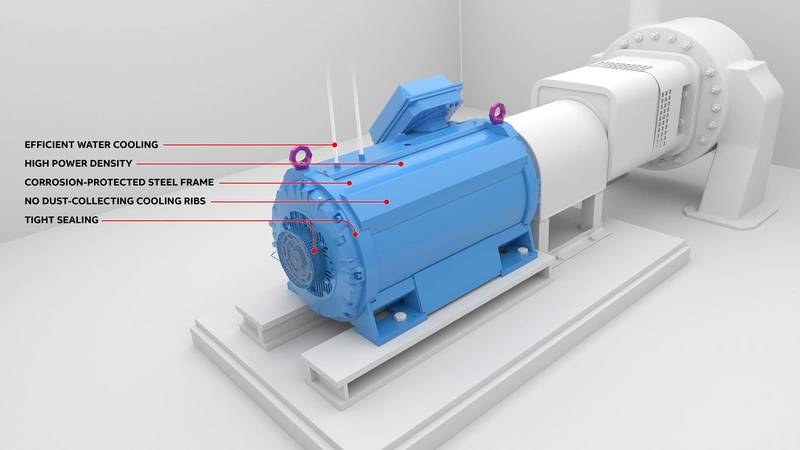 An example of a water-cooled motor supplied by ABB. Image: ABB Clean Water Required: The cooling method for water-cooled motors requires just a steady supply of clean ‘tap’ water, along with a chiller, pump and a pipe system to operate the closed water cooling circuit to cool down the motor frame and active parts. Because the motor is independent of the ambient air quality it is able to deliver constant, predictable and problem-free operation over a long period of time. The absence of frame cooling ribs results in a relatively smooth external structure, which enables higher quality of motor painting, and significantly reduce build-up of dust compared with an air-cooled design. And should dust accumulate, it cannot harm the motor’s cooling performance or be ingested into its internal parts.
An example of a water-cooled motor supplied by ABB. Image: ABB Clean Water Required: The cooling method for water-cooled motors requires just a steady supply of clean ‘tap’ water, along with a chiller, pump and a pipe system to operate the closed water cooling circuit to cool down the motor frame and active parts. Because the motor is independent of the ambient air quality it is able to deliver constant, predictable and problem-free operation over a long period of time. The absence of frame cooling ribs results in a relatively smooth external structure, which enables higher quality of motor painting, and significantly reduce build-up of dust compared with an air-cooled design. And should dust accumulate, it cannot harm the motor’s cooling performance or be ingested into its internal parts.
Optimized life-cycle costs: In the same marine applications, a water-cooled motor will generally have an improved life cycle cost against an air-cooled motor. This results mainly from longer intervals between service and a longer service life, mainly because the bearings and windings are protected from the overheating that can occur should the performance of the air cooling system be compromised - such as when dust accumulates.
Quieter operation: In some marine applications, and especially when a vessel is docked, noise levels can be an issue, particularly when several motors are operating in the same location. In an air-cooled motor most of the noise is produced by the fan. That means that a water-cooled motor with no fan will be significantly quieter.
Space Saver: There are installations where space can be at a real premium, especially in engine rooms or other below-decks applications. Water-cooled motors have high power density (in terms of kilowatts output per unit weight or volume). Therefore, a water-cooled motor can offer the potential to deliver the same output as an equivalent air-cooled motor within a significantly smaller footprint. In some cases, there can be further efficiencies and space saving possibilities as the water cooling system can also be utilized with other water-cooled equipment, such as variable speed drives (VSDs), which would otherwise require their own supply of cooling water.
New applications drive higher power designs
The use of water-cooled electric motors is not new in itself. They have been deployed in the marine industry for more than 50 years in special applications where space is scarce and the environment hostile in terms of dust, dirt and damp.
However, with the advent of new larger ships there has been a consequent demand for higher motor powers. Yet the same constraints on space and the requirements for safe, reliable operation remain. That is why the marine industry has been instrumental in driving the development of megawatt-class motors with high energy density.
ABB’s new megawatt motor
Leading the way in this development is the new water-cooled M3LP 500, ABB’s largest low voltage (LV) water-cooled jacket motor to date. In a 500 frame size, it is available with up to 2 megawatt (MW) output, which meets the growing global demand for ever-higher power while minimizing its installation footprint due to its optimized power density.
As well as delivering more power per kilogram than a comparable air-cooled motor, the M3LP 500 is also about 20 percent smaller.
The M3LP 500 has a media temperature of 38°C/100°F and a cooling-media flow of 15 gpm. Its internal cooling system is compatible with most marine cooling circuits. Therefore, there is no need for special adaptation or other time-consuming configuration work before deploying the motor.
The new motor offers extended maintenance intervals as it has been designed specifically to reduce the maintenance needs of the key active parts. In particular, the wear-sensitive bearings are kept cool at all times. This improves reliability, extends service intervals, and increases bearing lifetime. The use of standardized components, including the bearings, makes replacement fast and easy.
The motor’s end shields are easy to dismantle and re-assemble, which simplifies maintenance while reducing down-time. Labyrinth seals prevent intrusion of humidity, dust, or particles and reduce wear on the motor’s active components.
The M3LP motor is just at the beginning of its product journey. However, the indications are that it is opening up a number of interesting new applications. These include hybrid vessels and also for specialized functions such as driving water jet pumps on dredgers.





